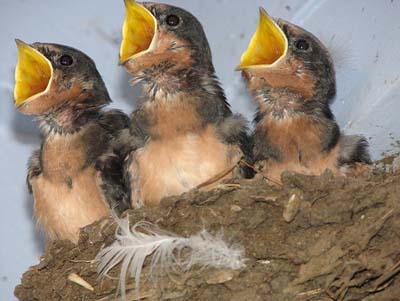Baby birds can do arithmetic
 London, Apr 2: Baby birds can count and perform basic arithmetic, say researchers.
London, Apr 2: Baby birds can count and perform basic arithmetic, say researchers.
The study, conducted by scientists from the universities of Padova and Trento, has shown chicks'' ability to add and subtract objects as they were moved behind two screens.
Lucia Regolin, the study''s author, said the animals "performed basic arithmetic" to work out which screen concealed the larger group of objects.
In the study, scientists found that the baby animals could distinguish between two and three and in tests consistently picked the higher figure.
According to researchers, the knowledge seems partly innate as the chicks were just three or four days old and had had no coaching.
In tests the chicks were shown a set of objects in groups of either two or three.
"We used the little plastic containers you get inside Kinder eggs and suspended them from fishing line," Professor Regolin told BBC News.
"We made these balls ''disappear'' by moving them behind the screens one at a time," the expert added.
In each of the mini maths tests, a chick watched from a clear-fronted holding box while one of the researchers slowly moved the balls behind the screens - three behind one screen and two behind the other.
The front door of the box was then opened, releasing the chick into the tiny arena, so it could walk around and select a screen to look behind.
They chose correctly - adding up the numbers based on groups of objects they couldn''t see at that moment.
"The chicks still approached the larger of the two groups first, even though they had to rely on memory to work out which screen to choose," said Professor Regolin.
"In a further experiment, once we had hidden the balls behind each screen, we transferred some of them from one to the other," the researcher explained.
The birds, she said, were able to "count" the balls that were moved to work out which screen hid the larger set at the end of the transfer.
"They still chose correctly - adding up the numbers based on groups of objects they couldn''t see at that moment," the expert added.
The study has been reported in the journal Proceedings of the Royal Society B. (ANI)